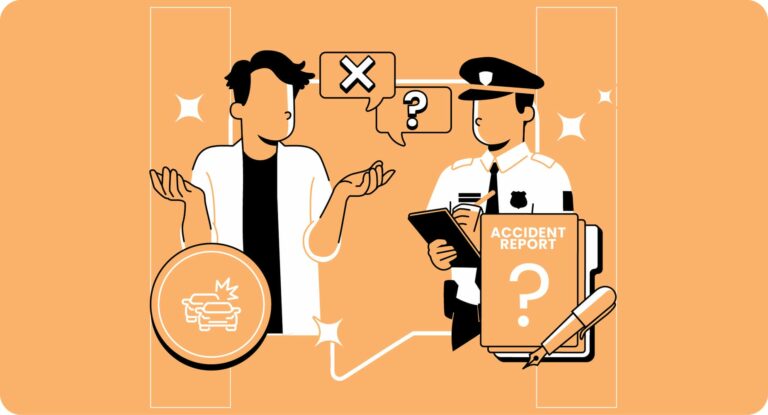How Much Can You Make From a Hit and Run?
Victims of hit and runs can potentially receive compensation for damages and expenses through insurance or legal action against the identified perpetrator, emphasizing lawful and ethical resolution methods.
With the right knowledge and resources, including the support of emergency responders and physical therapists, victims can embark on a path to recovery and justice. Understanding the available avenues for compensation and the essential steps to take post-incident can be a beacon of hope during such challenging times.
Why is it crucial to be informed about compensation after such an incident? Because every victim deserves justice, support, and the means to address both their immediate and long-term needs.
Factoids About Hit and Runs
| Factoid | Description |
|---|---|
| Increase in Fatal Hit-and-Runs | Fatal hit-and-runs have surged 89.4% from 2012 through 2021. |
| California’s High Rate | California had the highest share of deadly crashes involving hit-and-runs between 2012 and 2021 at 10.1%. |
| Nighttime Incidents | 77.3% of deadly hit-and-runs occurred at night between 2012 and 2021. |
| Pedestrian Involvement | Over the 10 years analyzed, 62.8% of deadly hit-and-runs involved a pedestrian. |
| Insurance Coverage | Uninsured motorist coverage can protect victims of hit-and-runs, covering medical expenses and vehicle repairs. |
| Weekend Occurrences | The majority of fatal hit-and-run crashes occurred on the weekend, with 7.1% involving hit-and-runs compared to 4.9% on weekdays. |
| December and February Peaks | December and February had the highest percentages of deadly hit-and-runs at 6.2% each. |
| Legal Consequences | Drivers who flee the scene of a hit-and-run could face serious legal consequences. |
Immediate Steps After a Hit and Run Accident
Experiencing a hit and run can be a sudden and distressing event, leaving victims in a state of shock and uncertainty. However, the actions taken immediately after the incident can significantly impact the outcome of any legal and insurance claims.
By following a clear set of steps and being proactive, victims can ensure they’re well-positioned to address the challenges ahead and seek the justice they deserve.
- As a victim, your first responsibility is to report the incident to the local police officers. This ensures that the legal system is alerted and can begin the process of identifying the fleeing driver.
- Document every detail. Snap photos of the accident scene, any damages to your vehicle, and any injuries you might have sustained. If there were any passersby or witnesses, obtain their contact information and statements.
- Even if you feel fine, it’s essential to consult with a medical professional or visit an emergency room. Some injuries might not manifest immediately but can have long-term consequences.
- Contact your insurance adjuster and provide them with all the documented evidence. This step is crucial for any potential compensation claims.
- Seek legal counsel or representation, especially from law firms that specialize in hit and run incidents. They can guide you on the next steps and ensure your rights are protected.
- Maintain a comprehensive record of all medical treatments, rehabilitation center visits, and any interactions with physical therapists or other medical professionals.
- Inform your family members about the incident. They can offer emotional support and might recall additional details that can assist in the case.
- If you spot a vehicle that matches the description of the one involved in the hit and run, inform the police officers immediately. Your vigilance can help in identifying the driver.
- Regularly check with the police and your legal representative on the status of your case. Ensure that all paperwork is filed correctly and within any required timeframes.
- Engage with victim assistance programs or support groups. They can provide both emotional support and practical advice on navigating the aftermath of a hit and run.
Insurance Options for Hit and Run Victims
In the aftermath of a hit and run, victims often find themselves at the crossroads of a complex insurance maze. When a driver flees the scene, it leaves the plaintiff, the injured party, in a challenging position. The primary avenue for many is their own insurance.
No-Fault Insurance, standard in many states, is designed to cover victims regardless of who was at fault. This policy typically includes Personal Injury Protection (PIP), which can address immediate medical needs. However, the maximum coverage might sometimes fall short, especially when injuries are severe and require visits to the emergency room or specialized treatments on the road to recovery.
For those who find themselves in situations where the at-fault driver remains elusive, Uninsured/Underinsured Motorist (UM/UIM) Coverage becomes essential. This policy acts as a supportive safety net, providing compensation when the responsible party is either uninsured or lacks adequate coverage.
What if the available compensation from UM/UIM isn’t enough? That’s where Supplementary Uninsured/Underinsured Motorists (SUM) coverage comes into play. It’s a special layer of protection, allowing victims to obtain the required funds to handle their medical and repair bills.
Always remember to contact your insurance adjuster to review and understand the specifics of your policy, ensuring you’re well-informed and prepared to make any necessary claims.
Alternative Compensation Avenues
While insurance is the first line of defense for many hit and run victims, there are alternative avenues of compensation that can be explored, especially when insurance falls short or is non-existent.
In some cities and states, provisions like the Motor Vehicle Accident Indemnification Act serve as a lifeline. This act is designed to protect and compensate victims who might not have insurance or whose coverage is insufficient.
The Motor Vehicle Accident Indemnification Corporation (MVAIC) plays a pivotal role in this process. To qualify for compensation under MVAIC, victims must meet certain criteria and provide the necessary evidence, such as medical records or witness testimonies. The road to obtaining compensation through MVAIC can be complex, and it’s essential to address every detail meticulously.
For many, navigating this path might seem daunting, but with the support of legal representatives and a clear understanding of the state’s provisions, victims can ensure they receive the justice and compensation they rightfully deserve. It’s crucial to handle each step with care, ensuring all documentation is in order and all avenues are explored.
Legal Recourse and Seeking Justice
The aftermath of a hit and run can be overwhelming, especially when grappling with injuries and the emotional trauma of the incident.
However, the legal system offers avenues for victims to obtain justice and be duly compensated.
- Hire an Attorney
- File a Civil Lawsuit
- Understand Court Proceedings
- Seek Restitution in Criminal Cases
- Engage with Legal Counsel
- Stay Updated on Legal System Procedures
- Collaborate with the Police
- Seek Support from Legal Representatives
- Address All Legal Aspects
- Recommend Witness Testimonies
By taking these steps and collaborating closely with legal professionals, you enhance your chances of seeking justice and obtaining the compensation you rightfully deserve after a hit and run incident.
Seeking Justice After a Hit and Run
If you or a loved one has been a victim of a hit and run accident, don’t navigate this challenging journey alone.
The Crockett Law Group, leading Moreno Valley car accident lawyer, is here to guide and support you every step of the way.
Call us today at (800) 900-9393 and let our experienced team help you seek the justice and compensation you deserve.











